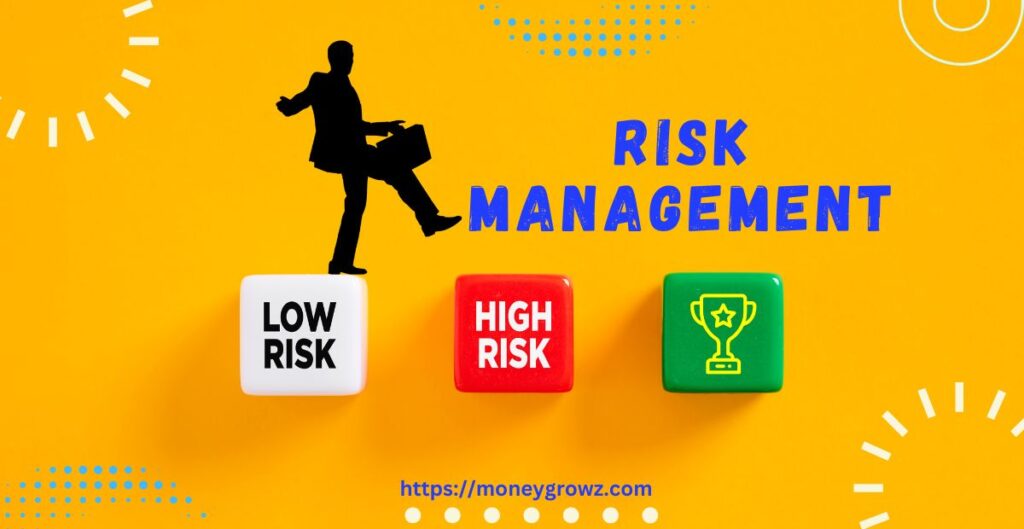Imagine you’re walking on a banana peel-covered tightrope while juggling flaming swords. That, my friend, is what life without risk management looks like. One wrong move, and BOOM—you’re in financial freefall. But don’t worry! I’m here to show you how to manage risk in a way that even your pet goldfish would understand.
What is Risk Management?
Risk management is like wearing a helmet before riding a bicycle. It’s all about identifying potential dangers, assessing how bad they could be, and then putting safety measures in place to avoid a trip to the ER (or in our case, financial ruin). The risk management process ensures that risks are properly identified, evaluated, and mitigated.
Why Should You Care About Risk Management?
Without risk management, your finances could end up looking like a plate of spaghetti after a toddler gets hold of it—an absolute mess. Here’s why finance and risk management matter:
- It prevents financial disasters (aka “Oops, I invested all my money in meme stocks, and now I live in a van!”)
- It helps you sleep at night (because you’re not panicking about losing everything)
- It makes you look smart (because, let’s be honest, nothing is sexier than financial wisdom)
Types of Risks in Risk Management You Should Watch Out For
1. Market Risk – When the Stock Market Says ‘Nope’
The stock market is like a rollercoaster—thrilling but capable of making you nauseous. One minute, your investments are skyrocketing; the next, they’re crashing harder than a toddler after too much sugar. The key? Diversify! Don’t put all your eggs in one Elon-Musk-shaped basket.
2. Credit Risk – When People Ghost You on Payments
Ever lent money to a friend who suddenly “forgot” to pay you back? Banks deal with this on a larger scale. If you lend money (or invest in bonds), always check if the borrower has a good track record. Otherwise, you might end up chasing them like a reality show debt collector.
3. Liquidity Risk – When You Can’t Cash Out
Imagine owning a rare, expensive Pokémon card, but no one wants to buy it. That’s liquidity risk! Some investments, like real estate or niche stocks, are hard to sell quickly. Always keep some cash handy—because landlords don’t accept Pokémon cards as rent.
4. Operational Risk Management – The ‘Oops, We Messed Up’ Factor
Even big companies make mistakes—like that time someone spilled coffee on the stock market’s server (okay, not really, but you get the point). Businesses face risks from fraud, system failures, or just plain bad decisions. Effective operational risk management ensures that internal processes are strong enough to prevent major failures.
5. Reputation Risk – When a Brand Gets Cancelled
One viral scandal, and a company’s stock price can nosedive faster than a gossip blogger’s reputation. Avoid businesses that are one bad tweet away from destruction.
Risk Management Strategies: How to Manage Risk Like a Boss
1. Diversify, Diversify, Diversify!
Would you put all your savings into one scratch-off ticket? No? Then don’t put all your money into one stock, either! Spread your investments across different assets like stocks, bonds, real estate, and maybe a side hustle selling artisanal dog treats.
2. Set Stop-Loss Orders
Stop-loss orders are like a financial ‘eject button.’ They automatically sell your stock if it drops to a certain price, saving you from the pain of watching it fall into the abyss.
3. Have an Emergency Fund
Life loves surprises, and not always the good kind. Keep an emergency fund with 3–6 months’ worth of expenses so that an unexpected financial curveball doesn’t send you into panic mode.
4. Don’t Invest With Your Emotions
FOMO (Fear of Missing Out) investing is how people end up buying stocks at their peak—right before they crash. Stay calm, do your research, and don’t make financial decisions based on Twitter hype.
5. Get Insurance (Because Life Happens)
Car insurance, health insurance, life insurance—these things exist so you don’t end up selling your kidney on the black market after an accident. Don’t skip them!
6. Keep Learning
Risk management isn’t a ‘set it and forget it’ kind of deal. Keep learning about new risks and financial strategies. You don’t want to be that person still using MySpace when the world has moved on.
Final Thoughts: Be a Risk Ninja!
Risk is everywhere, but that doesn’t mean you should live in fear (or in a bunker with canned beans). Smart financial risk management means taking calculated risks and preparing for the worst while aiming for the best. So, put on your metaphorical financial helmet, plan wisely, and keep those banana peels out of your path!
Got any risk management horror stories? Share them in the comments—because learning from mistakes is way cheaper when they’re someone else’s!



